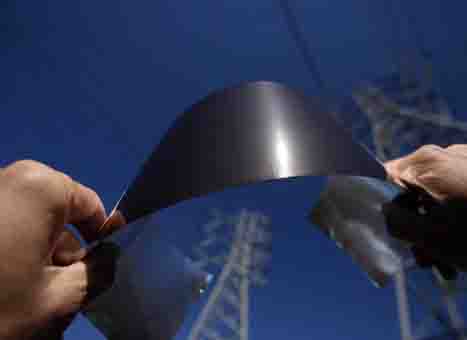
A report recently published in an online journal called Advanced Materials points out that a process has been developed by the researchers at the Iowa State University and the Ames Laboratory that can produce thin and constant light absorbing layers on textured substrates.
This increases light absorption by polymer solar cells, thereby increasing their efficiency and enabling its best use.
Mr. Chaudhary says that since it is already being used in silicon-based solar cells, the use of textured substrate to increase the working capacity of solar cells is not new. There are indications that by the right combination of substrate texture and the solution-based coating, power generated can be increased. But the technology has failed so far because of two reasons. First, it needs extra processing steps and then it needs coating technologies that are a challenge technically.
Attempts were also made to use solar cells in valleys by using various methods to produce light absorbing layers. But the performance of solar cells has been poor at the valleys and ridges because of loss of charge and short circuit.
An assistant professor of electrical and computer engineering at Iowa State University – Department of Electrical and Computer Engineering and an associate of the US Department of Energy’s Ames Laboratory, Sumit Chaudhary said that researchers are making polymer solar cells that have the capabilities of capturing more light within the ridges.
This includes the light they absorb from outside and the light that gets reflected from one ridge to another. These polymer solar cells are lightweight, easy-to make and flexible. Their functioning is improved by a textured substrate pattern that lets the removal of a thin light absorbing layer. As the light absorbing layer goes through the small ridges, it maintains good electrical transport properties in the solar cells.
It uses the sun trapping systems in the most efficient manner. The efficiency of polymer solar cells improves by 20 percent. Power conversion efficiency of the light-trapping cells is 20% more than flat solar cells of polymers. There was also a 100% increase in the light captured at the red/near infrared band edge.
Apart from professor Sumit Chaudhary, the team working on this project included, Kai-Ming Ho, an Iowa State Distinguished Professor of Physics and Astronomy and an Ames Laboratory faculty scientist, Kanwar Singh Nalwa, a graduate student in electrical and computer engineering and a student associate of the Ames Laboratory and Joong-Mok Park, an assistant scientist with the Ames Laboratory.
Dr. Sumit Chaudhary (list of publications) and his team are being supported by the Iowa Power Fund, the Ames Laboratory and the Department of Energy’s Office of Basic Energy Sciences.
The substrate and coating technology is being patented by The Iowa State University Research Foundation Inc. Once the technology is patented, it will be licensed to solar cells manufacturers. They can then make the proper and the best use of it.



